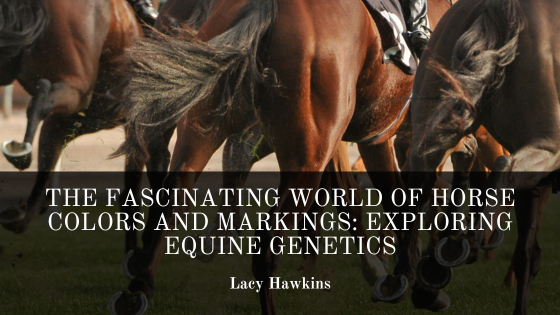Horses are among the most majestic creatures on the planet, admired for their strength, grace, and beauty. One aspect of their allure lies in their diverse range of colors and markings, which vary greatly from breed to breed and individual to individual. But what exactly determines the coat color and markings of a horse? The answer lies in the intricate world of equine genetics.
At first glance, it might seem like horses come in just a few basic colors—black, brown, chestnut, and white. However, when you delve deeper, you discover a stunning array of shades and patterns, each with its own genetic basis.
One of the most well-known genes that influence horse color is the Extension gene. This gene controls the production of black pigment, with a dominant allele (E) allowing for the production of black pigment, while the recessive allele (e) results in the absence of black pigment, producing a red or chestnut coat.
Another crucial gene is the Agouti gene, which determines whether the black pigment is distributed evenly throughout the coat or restricted to certain areas. Horses with the dominant Agouti allele (A) display a pattern known as “bay,” where black pigment is limited to the horse’s extremities (mane, tail, and lower legs) while the rest of the body remains a lighter color.
The Cream gene is known for diluting the base color of a horse’s coat, resulting in shades such as palomino, buckskin, and cremello. This gene acts in a semi-dominant manner, with one copy producing a diluted color and two copies producing an even lighter shade.
In addition to base colors, horses can also exhibit a wide range of markings, from simple stars and snips on the face to complex patterns like blankets and stockings. These markings are influenced by a combination of genetic factors and environmental influences when going through fetal development.
One such gene is the Tobiano gene, which produces a distinctive pattern characterized by white markings on the body that cross over the back. Horses with this gene typically have white legs and a dark head, creating a striking contrast.
Similarly, the Overo gene produces a different type of white patterning, with irregular patches of white that typically do not cross the back. Overo-patterned horses often have bald faces and predominantly colored legs.
The combination of these and other genes creates an endless variety of coat colors and markings in the equine world, each one unique and beautiful in its own right. Studying equine genetics not only deepens our understanding of these magnificent animals but also helps breeders produce horses with desired traits.
The world of horse colors and markings is a captivating realm where genetics and aesthetics intertwine. Understanding the underlying genetic mechanisms not only enhances our appreciation for the diversity of horse coat colors but also plays a crucial role in breeding programs aimed at preserving and improving horse breeds around the world. So, the next time you admire a horse’s coat, take a moment to appreciate the fascinating genetics that make each one truly one-of-a-kind.
